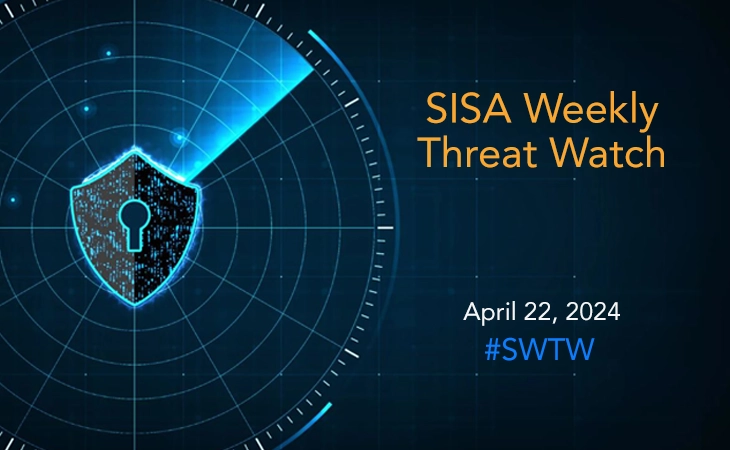Home » RBI’s New Framework on Cybersecurity: Strengthening Digital Payment Security Controls
RBI’s New Framework on Cybersecurity: Strengthening Digital Payment Security Controls
Share on

In a world where digital payment transactions are increasingly becoming the norm, cybersecurity has turned into an issue of paramount importance. Recognizing the growing need for robust cybersecurity measures, the Reserve Bank of India (RBI) has released draft directions to fortify cybersecurity and ensure secure digital payment transactions. The draft titled ‘Master Directions on Cyber Resilience and Digital Payment Security Controls for Payment System Operators’ is intended for application by RBI-authorized non-bank payment system companies. The payment system operators are also responsible for ensuring adherence to the directions by any unregulated entities, such as payment gateways, third-party service providers, vendors, merchants etc. with whom they have linkages with as part of their digital payments ecosystem.
Addressing Cybersecurity Risks
The draft directions emphasize several important aspects of cybersecurity management, including developing and implementing a comprehensive governance framework, ensuring regular audits, maintaining a robust incident response mechanism, conducting regular risk assessments, and providing necessary training to personnel. They also include information security risks and vulnerabilities and specify baseline security measures to ensure safe and secure digital payment transactions. This holistic approach to managing cybersecurity risks underscores RBI’s commitment to ensuring the resilience of India’s digital payment systems.
New Measures for Enhancing Cybersecurity
The draft directions propose governance mechanisms to address cybersecurity risks and baseline security measures to ensure the safety and security of digital payment transactions. Some of the key measures in the draft would require PSOs to:
- Formulate an Information Security policy, prepare a crisis management plan, undertake a cyber risk assessment.
- Notify RBI of any unusual incident, including cyberattacks, outages of critical system or infrastructure, internal fraud, and settlement delay, within 6 hours of detection. (This measure takes cue from CERT-In cybersecurity directions released in April 2022)
- Implement multi-factor authentication for all payment transactions conducted through electronic modes.
- Institute a board-approved incident response mechanism and a Business Continuity Plan based on different cyber threat scenarios.
- Establish a Security Operations Centre (SOC) to proactively monitor network logs and manage security incidents.
- Design a comprehensive data protection policy and ensure all applications are subject to rigorous and periodic security testing by qualified agencies.
Impact on Payment System Operators
The draft cybersecurity framework is a proactive step by RBI, to safeguard the country’s expanding digital payment landscape against potential cyber threats. The payment system operators, including banks, non-banking financial companies (NBFCs), and other digital payment platforms, will come under the purview of these proposed directions. These operators will need to implement the specified governance mechanisms and security measures, subject to the final directions from the RBI. Further, the draft directions also set out a number of new requirements for PSOs. These requirements are likely to increase the costs of compliance and operational complexity for PSOs. However, the long-term benefits of a more secure payments ecosystem are likely to outweigh the short-term costs of compliance. By strengthening the cybersecurity framework for PSOs, the RBI is aiming to create a more secure environment for digital payments. This will help to boost confidence in digital payments and boost adoption rates.
An Open, Collaborative Approach to Cybersecurity Regulation
In order to promote a collaborative approach to cybersecurity management, the RBI has actively solicited input on the draft directions from multiple stakeholders, including payment system operators, cybersecurity experts, and the general public. By engaging in this transparent and consultative process, the RBI aims to incorporate a diverse range of perspectives and experiences into the finalization of these vital directions. This inclusive approach ensures that all relevant voices are heard and taken into account, leading to more robust and effective cybersecurity measures.
In conclusion, RBI’s proposed framework is expected to significantly fortify India’s digital payment landscape against potential cyber threats. It is a testament to the proactive and comprehensive approach adopted by the RBI to manage cybersecurity risks in an increasingly digitalized economy. These measures, once implemented, are expected to bring a new level of security and resilience to digital payment transactions, thereby boosting consumer trust and facilitating the continued growth of India’s digital economy.
Stay tuned for further updates on these important developments in the cybersecurity space.
(Disclaimer: The content of this blog is based on the draft directions issued by the RBI. The final directions, once released, may have modifications as per the feedback received and the RBI’s discretion.)

RBI’s New Framework on Cybersecurity: Strengthening Digital Payment Security Controls
- June 9, 2023
Introduction
In an increasingly data-driven world, organizations must harness the power of their data while maintaining robust information security. Data discovery, a crucial aspect of data management, can help organizations uncover valuable insights while simultaneously ensuring data protection and compliance. This blog post will discuss why organizations should consider data discovery from an information security perspective and provide a comprehensive approach to successfully implement it.
Data Discovery as a key tool for Information Security
Data discovery is a critical component of an organization’s information security strategy. It involves the identification and classification of all data within an organization’s infrastructure, including sensitive data, and is essential for developing effective security controls. Without data discovery, an organization may not be aware of all the data it possesses, where it is located, or who has access to it, leaving them vulnerable to data breaches and other cyber threats. Data discovery enables an organization to gain greater visibility into its data, implement appropriate security measures, comply with data privacy regulations and maintain the trust of their customers. From an information security standpoint, there are several reasons why organizations should consider data discovery:
1. Identify sensitive data:
Data discovery allows organizations to locate and classify sensitive data, such as personally identifiable information (PII), intellectual property, or financial data. Understanding where sensitive data resides is essential for implementing appropriate security measures and complying with data protection regulations like GDPR and CCPA.
2. Enhance access control:
By understanding the nature and location of critical data, organizations can establish role-based access controls and implement the principle of least privilege. Data discovery helps ensure that only authorized personnel have access to sensitive information, reducing the risk of unauthorized access and data breaches.
3. Monitor and audit data usage:
Data discovery tools can help organizations monitor and audit data usage, ensuring compliance with regulatory requirements and internal policies. By tracking data access and usage patterns, organizations can identify anomalies, such as unauthorized access or data exfiltration, and take prompt action to prevent potential breaches.
4. Improve data governance
Implementing data discovery allows organizations to establish a strong data governance framework. This framework includes policies, procedures, and controls to manage data usage, ensure data quality, and maintain data security throughout its lifecycle. Besides, data discovery can help organizations streamline their data management processes by eliminating unnecessary data and reducing the risk of data duplication or inconsistency.
Data Discovery for a strategic approach to Information Security
1. Develop a clear data discovery strategy:
Before embarking on data discovery, organizations should develop a clear strategy that outlines the goals, scope, and objectives of the initiative. This strategy should prioritize data security and compliance, ensuring that data discovery efforts align with the organization’s overall information security program.
2. Choose the right tools:
Select data discovery tools that cater to your organization’s specific needs and are capable of addressing information security concerns. Look for tools with features such as data classification, data lineage, and access control capabilities to enhance your data security posture.
3. Create a cross-functional team:
Establish a cross-functional team with members from data management, information security, and relevant business units. This collaborative approach ensures that data discovery efforts take into account diverse perspectives and maintain a strong focus on information security.
4. Implement data classification and labeling:
Use data discovery tools to classify and label sensitive data according to predefined categories and risk levels. This information can then be used to implement appropriate security controls and data handling procedures.
5. Monitor and audit regularly:
Continuously monitor and audit data access, usage, and security controls to ensure ongoing compliance with regulatory requirements and internal policies. Regularly review and update your data discovery strategy to address evolving security threats and business needs.
Conclusion
Data discovery offers a wealth of benefits, from uncovering hidden insights to driving innovation. However, organizations must also prioritize information security in their data discovery efforts. By developing a clear strategy, choosing the right tools, and fostering collaboration, organizations can unlock the full potential of their data while maintaining a robust information security posture. Results from the data discovery process should help organizations address their information vulnerabilities with thorough details, customized reports, data categorization, and risk assessments that can be used to design improvements and remediation action plans.
Latest
Blogs
Whitepapers
Threat-a-Licious
Customer Success Stories
 USA
USA India
India APAC
APAC Middle East
Middle East Global
Global






 Facebook
Facebook Linkedin
Linkedin  Twitter
Twitter Youtube
Youtube








